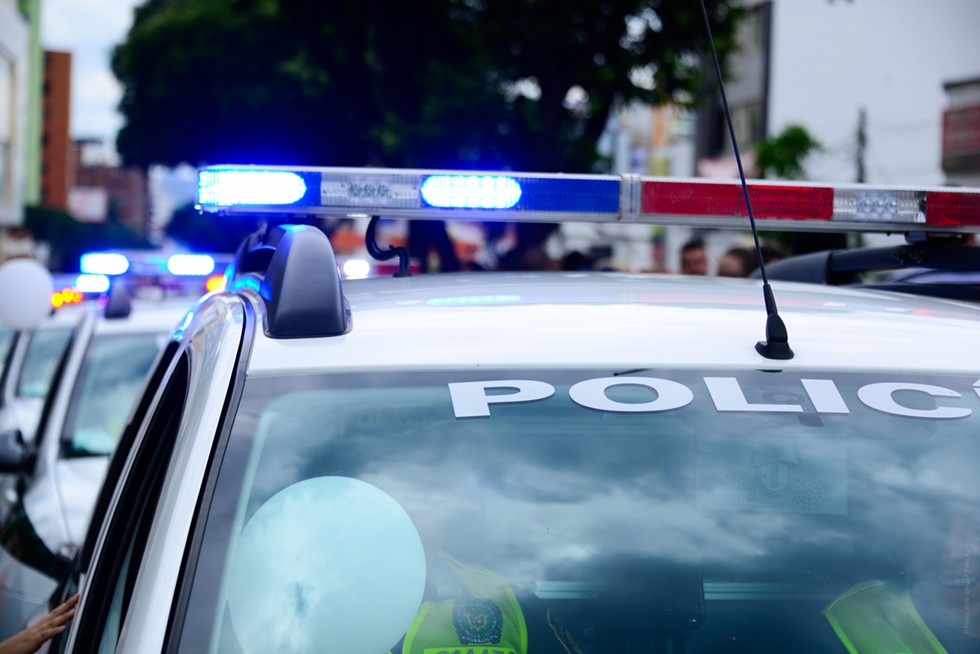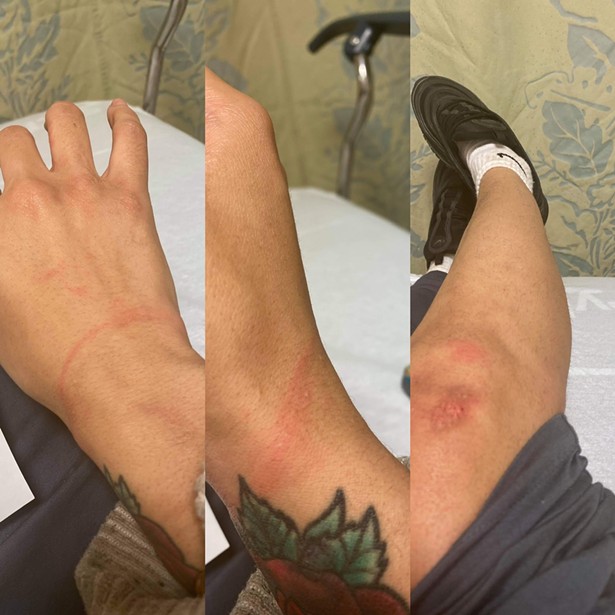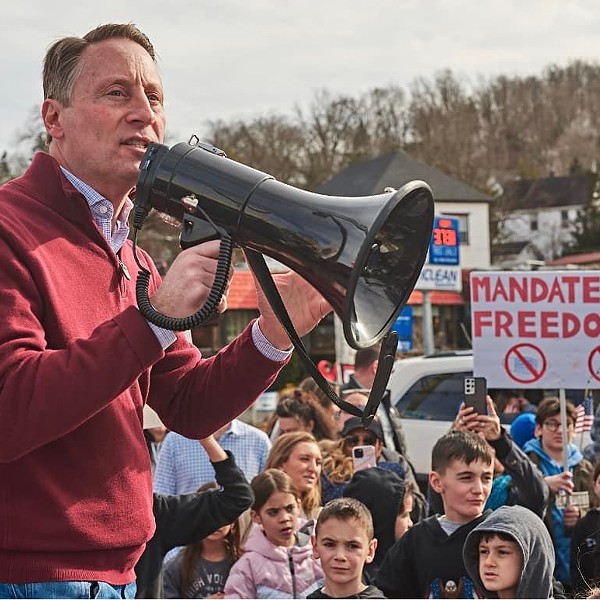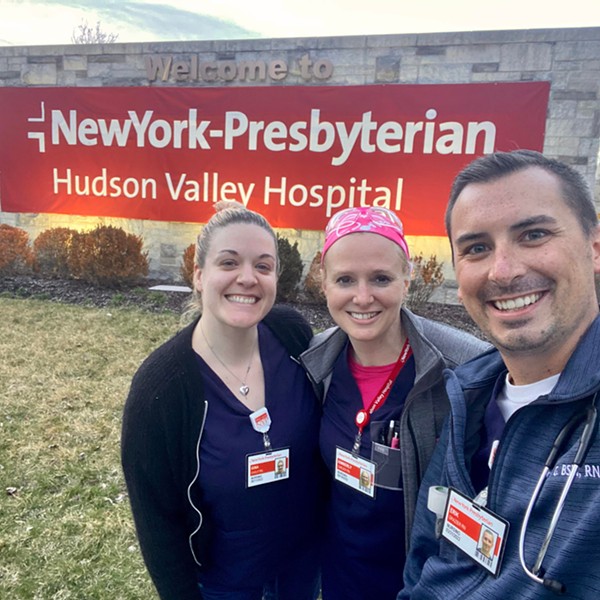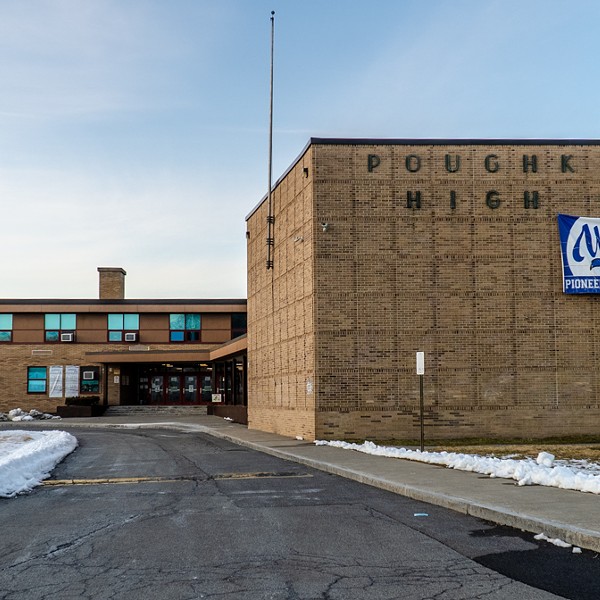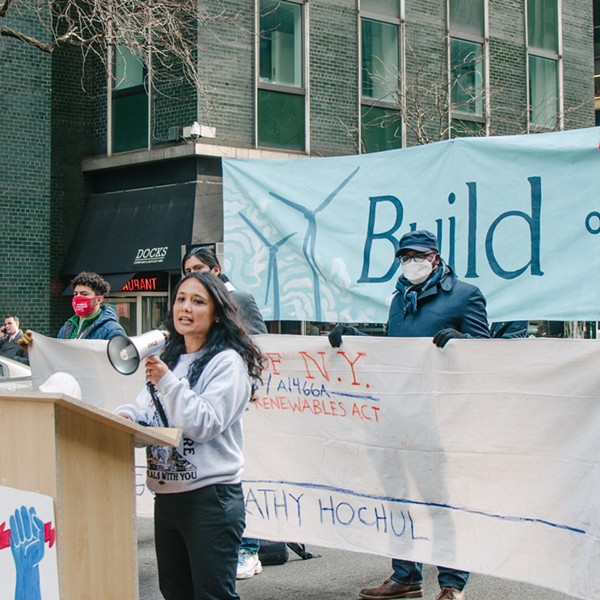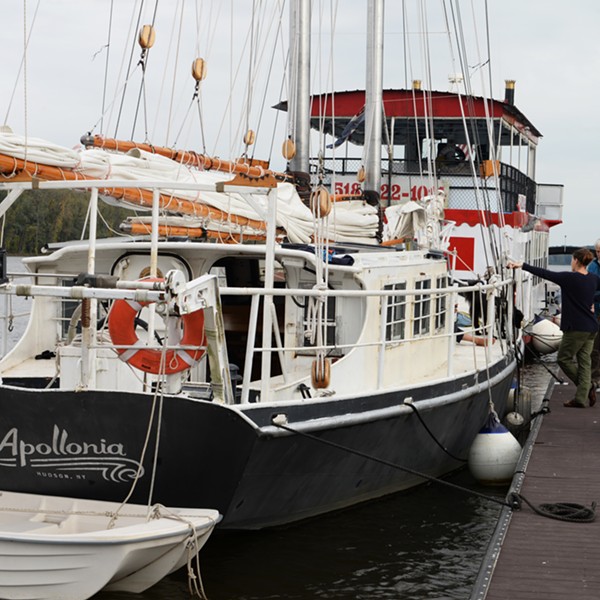Late last summer, Liz Carey was regularly attending Kingston’s Wednesday Walk for Black Lives, a weekly event in observance of police brutality against African Americans and others, when she began hearing of law enforcement increasingly stopping local motorists. It was referred to by critics as “stop and frisk,” in reference to the New York City Police Department’s decades-long practice of unconstitutionally detaining and searching members of the public, often on the basis of racial profiling. Indeed, Carey, a resident of a neighboring town but frequent visitor to Kingston, was told that local law enforcement was particularly targeting young Black men in the city’s Fourth and Fifth wards, which are heavily populated by people of color.
Some time later, Carey was driving through Kingston when she observed a New York State trooper and a Kingston Police Department officer pull over a car of young Black men for an issue with the vehicle’s brake light. Two days later, she was driving through Kingston again when she saw the same state trooper and another local police officer pull over another car of young Black men, again due to a brake light.
“I am in Kingston all of the time,” says Carey. “I’ve never been pulled over for a brake light or anything else. I saw firsthand what I kept hearing about. I saw what was happening and was like, ‘Oh, this is exactly what Wednesday Walk for Black Lives has been talking about. This is stop and frisk.’”
The concern over stop and frisk followed a significant change in the way local law enforcement policed Kingston last summer and fall. From August through October, the Kingston Police Department collaborated with troopers from the New York State Police and deputies with the Ulster County Sheriff’s Office on what the city describes as a “law enforcement partnership” to address violent crime. The 12-week-long operation involved more than 1,300 stops for routine traffic violations, but yielded only five firearms—while drawing significant charges of racism amid a nationwide movement against racialized police violence.
“The recent rash of crimes”
The law enforcement partnership was announced three weeks after the fourth fatal shooting in Kingston in less than a year and was intended to “prevent future violent incidents, as well as assisting in investigative work to solve the recent rash of crimes,” according to a press release. Egidio Tinti, chief of police, says that the department was approached by New York State Police with an offer of four to six additional troopers and a sergeant to increase patrols, investigations, and “community interaction,” along the lines of a similar partnership recently concluded between state police and the City of Newburgh Police Department.
(While Tinti cites the partnership in Newburgh approvingly, it has neither staunched violent crime in that city nor provided local police with significant crime-fighting support from the community. Newburgh’s police chief, Arnold Amthor, acknowledged as much on December 9, when he took to Facebook to condemn a gunshot victim for refusing to cooperate with investigating officers.)
The Kingston Police Department categorically rejects the characterization of its law enforcement partnership as “stop and frisk.” Tinti distinguishes the campaign from New York City’s practice by arguing that the partnership was based on observed offenses, such as broken brake lights, while stop and frisk is based on the suspicion of offenses.
“One driver, I believe, got 16 tickets,” says Tinti. “And although people will criticize, ‘Well, that’s just ridiculous,’ there were 16 violations, clear violations that that driver had, whether it was mechanical violations in the vehicle or driving violations, either way. And when he goes in front of the judge, the judge will determine whether he’s got to answer for those or the judge might say, ‘No, I’m dismissing all of them,’ and that’s fine too. The officers did their jobs.”
Tinti points out that while all of the 1,329 traffic stops conducted as part of the law enforcement partnership were based on observed offenses, the driver was let off with only a warning in 1,144 of those cases—illustrating that this was not meant to be a ticketing blitz. But in terms of statistics, there’s little to indicate that the partnership had much success fighting violent crime, either. As previously mentioned, the traffic stops yielded five firearms, and Tinti says that, in terms of investigations, “there’s still more to come.” Otherwise, the published results don’t obviously connect to gun violence: 149 drug arrests, 29 DWI arrests, 32 unspecified warrants. Nevertheless, Tinti won’t have the success of the partnership questioned.
“You’re coming in on this as a reporter on the far tail end of it,” he tells The River. “It’s already passed us. So in order to do a story on stop and frisk, at this point, really doesn’t serve any purpose. That’s my opinion on this.”
He continues: “We’re still talking about four illegal guns taken off the street that would not have been taken care of if not for this enforcement effort. What would have made it better? Twelve guns? Eighteen guns? What’s the number? Four is a success.”
(In a subsequent email to The River, Tinti explains that a fifth firearm was seized as part of the law enforcement partnership, but was processed by New York State Police, rather than the Kingston Police Department.)
Conspicuously absent from the statistics collected on the law enforcement partnership are the demographics of those stopped, which Tinti attributes to the lack of race listed on driver’s licenses. (Arrest reports, on the other hand, do have a field for race; of the arrestees, 47 percent were white males, 31 percent Black males, 15 percent white females, and 6 percent Black females.) In the absence of any statistics to the contrary, the Kingston Police Department has faced allegations of racial profiling, which are inspired by both the historic opposition to New York City’s stop and frisk practice and the ongoing Black Lives Matter movement.
“I only want to be treated equally”
After witnessing two stops just two days apart, Carey began documenting the instances of law enforcement pulling over young Black men that she happened upon as part of Kingston Copwatch. She repeatedly observed law enforcement using brake lights as a pretense for a stop, which got her thinking that maybe mutual aid—that is, the free exchange of goods and services for the common welfare (rather than for profit)—offering to repair brake lights could be an answer to preventing stops.
“If this is the reason that people are being pulled over, then let’s make sure that everyone’s brake lights are fixed,” Carey remembers. “It was basically going to be myself and my spouse if it came down to that, because I can sign people in and he can change a brake light.”
Luckily, it did not come down to that. Carey had recently joined the Mid-Hudson Valley Democratic Socialists of America, the local chapter of a national political organization advocating socialist government reform, which had previously organized a “brake light clinic” in Kingston in May of 2019 and was able to assist once more. The Mid-Hudson Valley DSA’s second brake light clinic in Kingston was held on September 27 in a parking lot at the corner of Elmendorf Street and Broadway in the city’s Fourth Ward. For three hours around noon, more than a dozen DSA members provided visitors with free brake lights, assistance replacing their old bulbs, and literature on their rights when stopped by the police. Carey estimates that more than 30 people drove through and many more stopped by for free food or bicycle bells, as police had been stopping bicyclists without bells as part of their campaign as well.
(“My husband and I have biked around Kingston quite often,” notes Carey, “and I have never been pulled over for not having a bell on my bike.”)
As both the Kingston Police Department and the city’s mayor, Steve Noble, have proven resistant to criticism, Carey believes that it’s up to community members to continue curbing the impact of problematic programs like the law enforcement partnership.
“I think that mutual aid is what it’s going to come down to because it doesn’t seem like the mayor or the troopers or the Kingston Police Department are going to listen to any naysayers or dissent,” she says. “They seem to have their eyes on gentrification and that being the future of Kingston, so it really is going to have to come down to the community taking care of one another and protecting each other.”
(Kingston Mayor Noble did not respond to any of several inquiries from The River for this article.)
Even if the true purpose of the law enforcement partnership was to stem violent crime, rather than aid gentrification, two recent events bode poorly for its success.
On December 28, Ulster County Sheriff’s deputies stopped 26-year-old Shana Shaw for what they later called “traffic infractions.” Shaw, who is a nursing assistant, was picking up food on her way to work when she was pulled over. According to an arrest report, Shaw was driving with a suspended license and “was in possession of a quantity of marihuana.” What happened next was captured on video: After a short verbal exchange, two officers forcibly removed Shaw from her vehicle, pinned her on the pavement, and handcuffed her. One yelled, “stop resisting!”
In an interview, Shaw says she has felt targeted by the police ever since she attempted to sue the department following an incident when she was 18 in which a patrol car t-boned her vehicle, totaling it. Shaw says she was stopped last month for failing to use a turn signal, and the encounter left her with a concussion and a “messed up wrist,” which caused her to miss work—her job requires her to lift people. She shared photos of her injuries and a video of the arrest taken from her cellphone with The River.
“I just want a good life without worrying if I might die by cops,” she says. “I only want to be treated equally.”
In a statement provided to The River, Ulster County Sheriff Juan Figueroa said there is an “ongoing preliminary investigation” into the incident. “If there is any wrongdoing on behalf of the members of this office, they will be held accountable.”
Less than two weeks earlier, on December 17, a 12-year-old girl, D’Janeira Mason, was killed and her 8-year-old brother, Dasane, was injured when shots were fired into their home in Kingston’s Fourth Ward, three blocks from where DSA had held its brake light clinic and where Carey observed a concentration of stops. In an interview with the Daily Freeman about the shooting, Tinti made no reference to the 12-week partnership nor the leads on violent criminals that it was intended to yield. Instead, he explained that the Kingston Police Department was handing the case over to the New York State Police.
“We have a great working relationship with them,” said Tinti.







